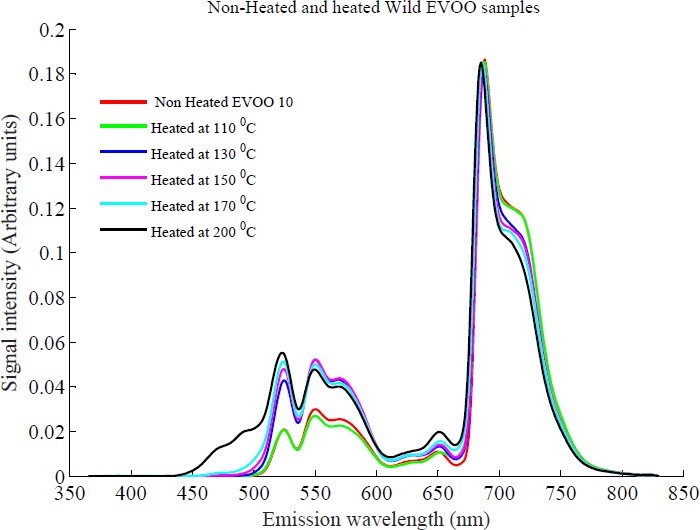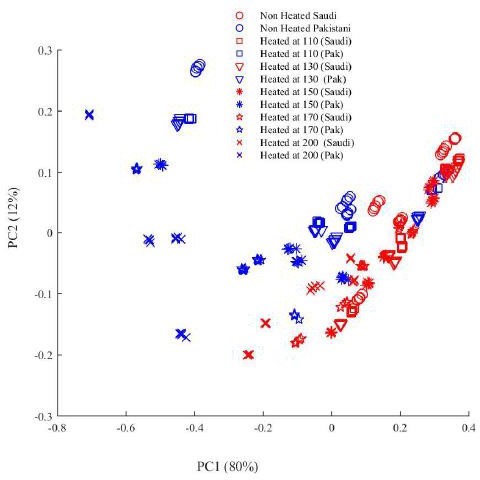By Naveed Ahmad
Extra virgin olive oil is considered as superlative among all types of vegetable oils being largely consumed all over the world as general and in European Mediterranean region. Its natural nutritional ingredient like oleic acid makes it an effective diet against many diseases particularly towards prevention of cardiovascular problems by lowering low density lipoproteins. EVOO consumption is expanding across the globe due to high phenolic and antioxidant contents as compared to other edible oils [1]. Therefore, cultivation of olive plants is also increasing across the world at large which consequently affect the fatty acid contour, quality, aroma and natural tendencies depending on the environmental conditions. Overall global warming is also affecting the production and quality of extra virgin olive oil.
Due to climate change and increasing temperatures across the different regions of the globe, EVOO cultivar varieties has been witnessed to show different relative thermal agitation. Under thermal stress conditions, EVOO retains its natural nutritional ingredients by avoiding the breakage of covalent bonds present in the fatty acid chains responsible for different biomolecules. These fatty acid chains do not show much destruction when heated at relatively high temperatures of 150 t0 170 oC [2].

Figure 1 Fluorescence Emission spectra of non-heated and heated cultivated EVOO sample from Al-Jouf KSA
A study from different regions of the Pakistan and Al-Jouf Olive farms of Kingdom of Saudi Arabia has evidenced the fact that the thermal stress adherence of different EVOO samples showed different relative agitation. The results from Fluorescence spectroscopy of EVOO samples evidenced that the environment and climate change affect the quality of EVOO and its response to thermal stress. This rise in intensity above 170℃ shown in Fig. 1 is probably due to oxidation of certain dietary components, saturated & unsaturated aldehydes, alcohols, and epoxy compounds which are among the unstable primary oxidation products and degrade to secondary ones. Unsaturated fatty acids are vulnerable to oxidation due to the presence of at least one double bond in their fatty acid chain. The nutritional ingredients in vegetable oils undergo several chemical processes like oxidation and hydrolysis during household cooking and deep frying. After thermal processing, compositional changes in fatty acid chains in olive oil are evidenced along with sterol oxidation degradations Millard reactions, TAG hydrolysis and polymerization [3]. Due to its high oleic acid content, EVOO should be more stable than other edible oils at high temperature, but antioxidants and vitamin E may get oxidized rapidly with increased temperature [4, 5].

Figure 2 Fluorescence Emission spectra of wild EVOO from Baluchistan, Pakistan
Wild EVOO samples spectra shown in Fig. 2 come up with totally different behavior under thermal stress due to different climate and environmental conditions of the area of cultivation of this product.

Figure 3 Principal component analysis (PCA) of all Heated and Non Heated EVOO samples from Saudi Arabia and Pakistan
The PCA scatter plot mainly classifies all the EVOO samples in to two major groups which are evident from red and blue colors. This shows that the effect of heating on Pakistan and Saudi based EVOO samples at the same temperature is not the same.
All EVOO samples from Saudi Arabia and two samples from Pakistani research station were found to be more thermally stable due to the cultivation practices, harvesting, oil processing and storage conditions. The stability of olive oil during heating can be impacted in the fatty acid composition due to its oxidation. EVOO should be more stable than other edible oils at high temperature, but antioxidants and fatty acids may get oxidized rapidly with enlarged temperature conditions.
Read all in: doi: https://doi.org/10.1007/s10895-023-03186-3

Naveed Ahmad. Find his curriculum here
- Saleem M, Ahmad N, Ali H, et al (2017) Investigating temperature effects on extra virgin olive oil using fluorescence spectroscopy. Laser Phys 27:01–10
- Ahmad N, Saleem M, Ali H, et al (2017) Defining the temperature range for cooking with extra virgin olive oil using Raman spectroscopy. Laser Phys Lett 14:. https://doi.org/10.1088/1612-202X/aa7d3e
- Carla S.P. Santos, Rebeca Cruz, Sara C. Cunha SC (2013) Effect of cooking on olive oil quality attributes. Food Res Int 54:2016–2024
- Rasha M. El-Abassy, Patrice Donfack AM (2010) Assessment of conventional and microwave heating induced degradation of carotenoids in olive oil by VIS Raman spectroscopy and classical methods. Food Res Int 43:694–700
- Barbara Muika, b BL b, Antonio Molina-D´ıaz a MJA-C (2005) Direct monitoring of lipid oxidation in edible oils by Fourier transform Raman spectroscopy. Chem Phys Lipids 134:173–182

